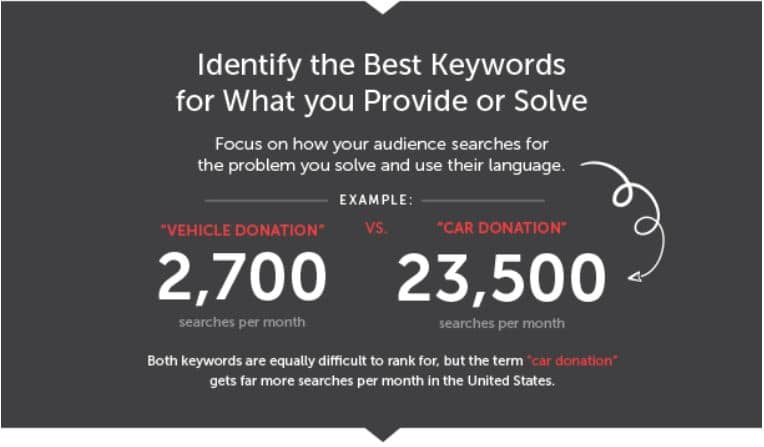One of the hardest-hit sectors during the COVID-19 pandemic has been nonprofits. Due to many nonprofits’ reliance on in-person events to do a majority of their fundraising, and with large gatherings not being allowed in many states, nonprofits need to find other means to raise money and build awareness. Luckily, nonprofits have a secret weapon that even they may not always know about.
Search engine optimization.
While SEO has been utilized throughout the for-profit industry for over 20 years, many nonprofits have not utilized the ability to get found in search.
That’s a huge missed opportunity.
If you find that your nonprofit is in this boat, here are 6 ways your nonprofit can begin optimizing your site to gain higher rankings, build more awareness, and increase funding.
Audiences who want to learn more about a specific issue in their community or the world turn to search engines for answers. If you have great pieces of content that address this issue, you are far more likely to be found in search engines than if you simply have a brochure-ware site that only focuses on your organization.
By creating this issue-based content, you’re going to get the right audiences to your site and increase the likelihood of getting donations.
When creating new content, it’s important to understand what your content is truly about. What specific query would someone search for to find your content? Is this keyword the same keyword you use in your content? This is where keyword research comes into play. Identify the keywords that best describe what your nonprofit does and the problems it solves. Look for keywords that fit your audience but also have a high enough search volume that they are worth your time.

From 919 Marketing’s Nonprofit SEO Guide.
In the example above, it makes more sense to focus on “car donation” than “vehicle donation” due to it having nearly 9x the search volume. In this example, we’re also assuming that both of these keywords have similar organic difficulty - a measure of how hard it is to rank organically for a specific keyword.
As a nonprofit, one of your biggest assets is the stories you can tell about how you are making an impact in the world. By combining this information with keyword targeting above, you can utilize keywords people are searching for and incorporate them into your stories.
For example, one of the highest-ranking pieces of content for the query “clean drinking water in Africa” is this story by The Water Project. By focusing even a bit on SEO, they are able to rank highly for this search term and gain new audiences.
Creating great content that engages audiences is only half of the battle. The other half is to get search engines to notice. This requires some technical guidance to make sure your on-page content is optimized for search.
Some of the most important aspects to remember:
Getting inbound links from authoritative sites is still a major ranking factor in Google searches. Nonprofits often have an ace up their sleeve when it comes to getting authoritative links, as many are already working with schools or governmental agencies - which, in most cases, have high Domain Authorities. Simply asking for a link back to your nonprofit’s website from these organizations can result in a major boost for your site’s link profile, which will help all of your content in search rankings.
Google is obviously the largest search engine in the world.
Do you know what’s #2?
Not Bing.
Nor Yahoo!
Nor Facebook.
YouTube.
YouTube is the second biggest search engine in the world and is an amazing vehicle for nonprofits to reach potential audiences and share stories and their impact on the world. If you’re creating any videos, make sure that you are posting them on YouTube and optimizing them there as well. That extra exposure will help drive the development and awareness of your cause than simple blog posts sometimes can’t completely convey.
Our friends over at 919 Marketing made a great nonprofit SEO infographic as well with even more tips and tricks for nonprofits. 